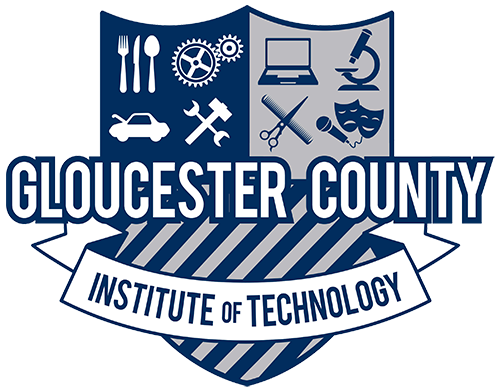Introduction
Communication technology has transformed how people connect at home, in schools, and at work. This paper examines key contemporary advancements, smartphones, and their effects on family interactions. It then reviews recent educational and workplace technologies. Finally, it compares the benefits and drawbacks of a digitally connected remote work environment.
Evolution of Communication Technology in the Family Environment
Smartphones have become central to daily life. Families use group chats and video calls to stay in touch, even when members live apart. Positive outcomes include easier coordination of schedules and quick emotional support (Smith, 2019). Teens can share location updates for safety, and seniors can check in via video calls. Case in Study: Every senior trip the kids are allowed to go off on their own, however they have physical check in times twice a day and all chaperones are available by Teams at any time. This gives them the freedom they want but also allows them to be protected at a safe distance.
However, smartphones are also known to disrupt face-to-face interactions. Mealtimes can become “silent dinners” as everyone scrolls through feeds. Parents may be physically present but mentally absent, leading children to feel neglected (Smith, 2019). Overuse can spark conflicts when one member feels ignored or when inappropriate content is accessed. We have no phones at the table policy in my house. During mealtimes no phones are allowed even if someone calls, they know they can always call them back after.
Current Communication and Technology Advancements in the Educational Sector
When it comes to education, online learning management systems (LMS) like Canvas and Blackboard allow instructors to post lectures, quizzes, and discussion boards. These platforms support asynchronous learning, letting students review materials at their own pace (Baran, 2023). Interactive tools—such as polls and breakout rooms—enhance engagement during live sessions.
Every system is equipped with basic Artificial intelligence (AI)–driven analytics that tracks student progress. As educators we can see their grades in real time. This helps to see when a student struggles, enabling timely interventions (Baran, 2023). Many schools also use digital badges and gamification to motivate learners. These technologies foster collaboration in virtual teams and prepare students for digital workplaces.
Technology in the Classroom for Virtual Students
Video-conferencing tools such as Zoom and Microsoft Teams enable real-time classrooms for remote learners. Virtual whiteboards and screen-sharing let instructors demonstrate concepts interactively (Johnson & Johnson, 2020). Recording lectures provides students with the ability to replay complex material. During COVID-19 I taught every class this way. And quickly made my own online learning system just so the students were better equipped to pass rather than fail.
Adaptive learning platforms use AI to present customized lessons. For example, if a student answers questions incorrectly, the system offers additional practice until mastery is achieved (Johnson & Johnson, 2020). Such personalization helps maintain student motivation and supports diverse learning styles.
Evolution of Communication and Technological Advancements in the Contemporary Workplace
Workplaces have shifted from memos and faxes to email and instant messaging. Tools like Slack and Microsoft Teams consolidate channels for text, voice, and video communication (Baran, 2023). Cloud storage enables shared document editing, eliminating version-control issues. As a Microsoft Office school we deal with sharing information around the school every day for various reasons, this does make workflow faster.
Strategic messages now travel faster and to wider audiences. Marketing teams can post campaigns across multiple social platforms in minutes. Crisis communication protocols use mass-notification systems to alert employees instantly. Data Analytics informs message tailoring by tracking open rates and engagement metrics.
Pros and Cons of a Digitally Connected Remote Work Environment
A remote work environment offers flexibility and reduces commute time, improving work–life balance (Davis & Silver, 2021). Employees can collaborate across time zones, drawing on global talent pools. Cost savings on office space can be reinvested in employee development.
Yet, constant digital connectivity can blur boundaries between work and personal life, leading to burnout (Davis & Silver, 2021). As a freelance graphic designer, I worked from home for years. After so many years, I just couldn’t stand the no schedule environment. I needed a structure. I needed to go to work. Thats when I decided to teach what I do. And finally, probably the worse con without even realizing is that cybersecurity risks increase when employees use personal devices on unsecured networks.
Conclusion
Communication technology continues to evolve, reshaping family life, education, and work. Smartphones offer both convenience and challenges for families. In education, LMS and AI tools improve access and personalization. Virtual classrooms bring flexibility to learners everywhere. In the workplace, digital platforms enable strategic messaging and global collaboration. However, remote work demands careful management of well-being and security. As technology advances, communicators must balance innovation with human needs.
References
Baran, S. J. (2023). Introduction to mass communication: Media literacy and culture (12th ed.). McGraw Hill.
Davis, G. F., & Silver, C. (2021). Remote work: Pros and cons. Journal of Business Communication, 58(3), 302–319.
Johnson, K., & Johnson, L. (2020). The impact of Zoom on virtual classrooms. Journal of Educational Technology, 35(2), 45–59.
Smith, A. (2019). Smartphones and family communication patterns. Journal of Family Communication, 19(2), 123–140.
